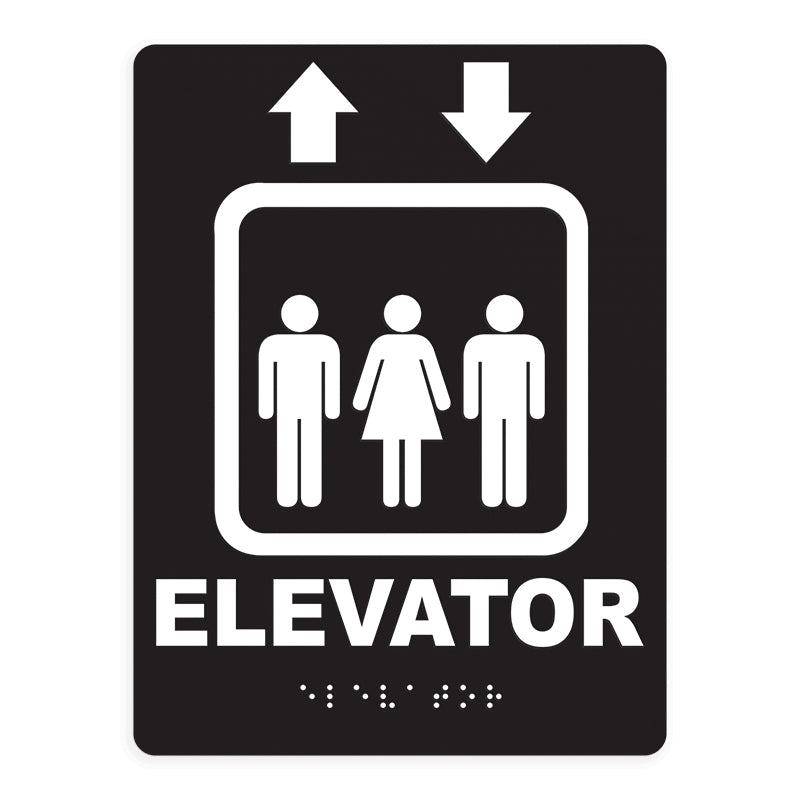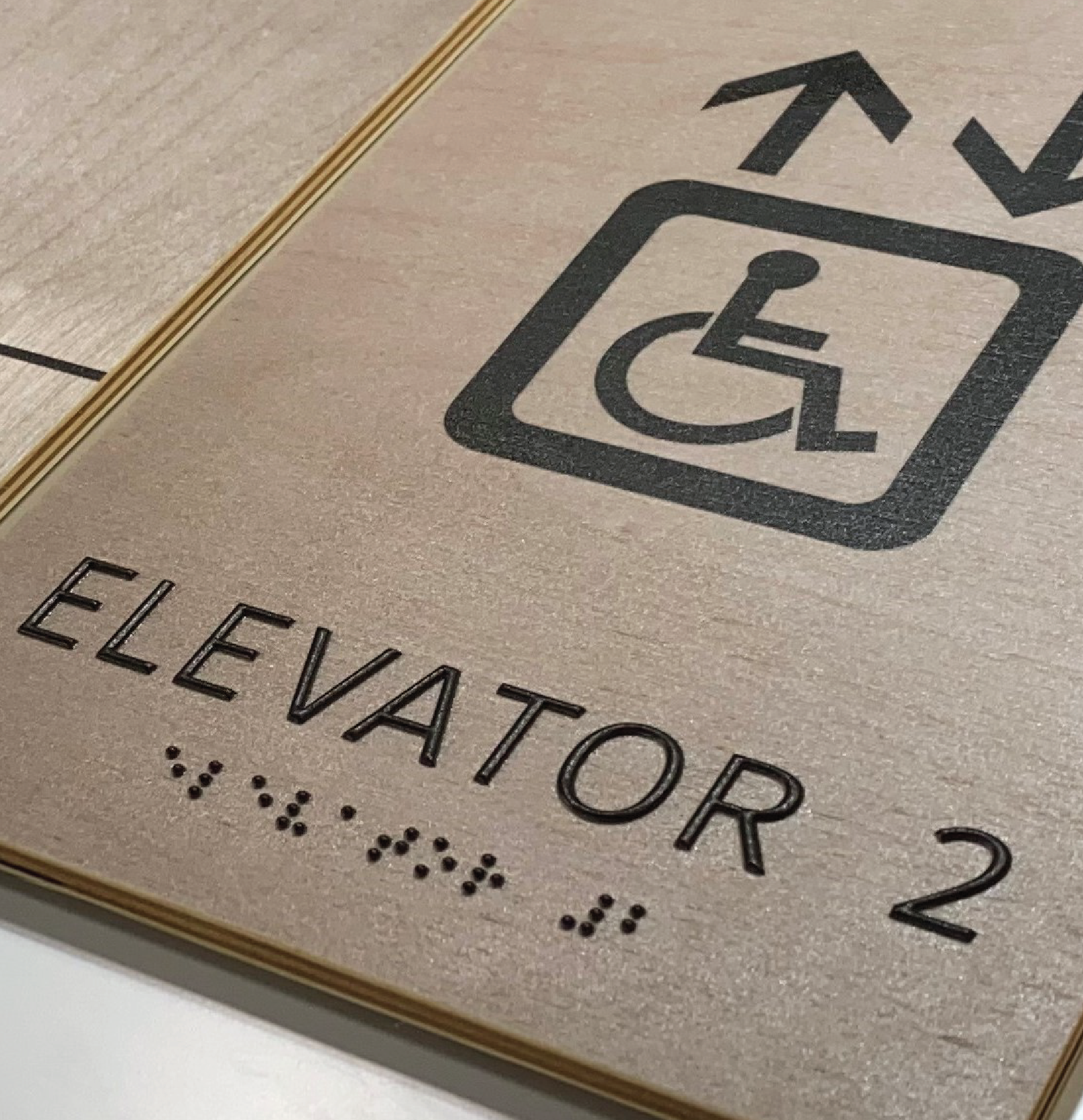Exploring the Trick Features of ADA Indicators for Boosted Access
In the world of ease of access, ADA indicators serve as quiet yet powerful allies, making certain that rooms are comprehensive and navigable for people with specials needs. By integrating Braille and responsive aspects, these signs break obstacles for the visually impaired, while high-contrast shade plans and legible font styles provide to varied visual demands.
Significance of ADA Conformity
Guaranteeing conformity with the Americans with Disabilities Act (ADA) is critical for fostering inclusivity and equivalent accessibility in public spaces and offices. The ADA, established in 1990, mandates that all public centers, employers, and transport solutions accommodate individuals with specials needs, guaranteeing they enjoy the exact same legal rights and possibilities as others. Conformity with ADA standards not only satisfies lawful commitments but likewise improves a company's online reputation by demonstrating its commitment to diversity and inclusivity.
One of the essential elements of ADA conformity is the execution of accessible signs. ADA signs are designed to guarantee that individuals with impairments can quickly navigate with rooms and structures. These indications need to abide by details standards pertaining to dimension, font style, shade contrast, and placement to guarantee visibility and readability for all. Properly applied ADA signs aids get rid of barriers that people with disabilities frequently experience, thus promoting their freedom and self-confidence (ADA Signs).
Additionally, sticking to ADA regulations can reduce the risk of legal repercussions and possible fines. Organizations that stop working to adhere to ADA standards may encounter claims or penalties, which can be both financially challenging and harmful to their public picture. Hence, ADA compliance is integral to promoting a fair atmosphere for every person.
Braille and Tactile Aspects
The unification of Braille and tactile components into ADA signs personifies the principles of access and inclusivity. These functions are crucial for people that are blind or visually impaired, enabling them to browse public rooms with greater self-reliance and self-confidence. Braille, a tactile writing system, is necessary in supplying created information in a layout that can be conveniently perceived with touch. It is typically placed underneath the equivalent text on signage to make sure that people can access the details without visual support.
Responsive elements extend past Braille and include elevated signs and personalities. These parts are made to be noticeable by touch, permitting people to determine space numbers, washrooms, leaves, and various other essential locations. The ADA establishes certain guidelines regarding the dimension, spacing, and positioning of these tactile elements to optimize readability and make certain uniformity across different settings.

High-Contrast Color Design
High-contrast color pattern play a pivotal duty in improving the visibility and readability of ADA signs for individuals with aesthetic disabilities. These schemes are crucial as they make best use of the difference in light reflectance in between text and background, guaranteeing that signs are quickly discernible, also from a distance. The Americans with Disabilities Act (ADA) mandates making use of specific shade contrasts to accommodate those with restricted vision, making it an important facet of compliance.
The efficiency of high-contrast colors exists in their ability to stick out in various illumination problems, including dimly lit settings and areas with glow. Typically, dark text on a light history or light text on a dark background is utilized to attain optimal comparison. For circumstances, black text on a white or yellow history provides a plain aesthetic distinction that aids in quick acknowledgment and comprehension.

Legible Fonts and Text Size
When thinking about the style of ADA signs, the selection of legible fonts and suitable text size can not be overemphasized. These elements are important for making sure that signs are available to people with aesthetic problems. The Americans with Disabilities Act (ADA) mandates that fonts must be sans-serif and not italic, oblique, script, very attractive, or of uncommon type. These demands assist make sure that the message is quickly understandable from a distance and that the characters are distinguishable to varied target markets.
According to ADA standards, the minimum message height need to be 5/8 inch, and it ought you can look here to increase proportionally with checking out distance. Uniformity in text dimension contributes to a natural visual experience, assisting individuals in browsing atmospheres efficiently.
Moreover, spacing between lines and letters is essential to readability. Sufficient spacing prevents characters from appearing crowded, boosting readability. By sticking to these standards, developers can dramatically enhance ease of access, guaranteeing that signs serves its designated purpose for all individuals, no matter their visual abilities.
Reliable Placement Methods
Strategic positioning of ADA signs is vital for optimizing access and making certain conformity with legal requirements. ADA guidelines specify that indications ought to be mounted at a height in between 48 to 60 inches from the ground to guarantee they are within the line of sight for both standing and seated individuals.
In addition, indications must be positioned nearby to the lock side of doors to enable easy recognition before access. Consistency in indicator placement throughout a center boosts predictability, decreasing complication and enhancing total individual experience.

Conclusion
ADA indications play an essential role in advertising ease of access by incorporating attributes that deal with the requirements of people with disabilities. Integrating Braille and responsive components ensures essential info comes to the visually impaired, while high-contrast color pattern and legible sans-serif font styles improve presence throughout numerous lighting conditions. Effective placement approaches, such as ideal mounting heights and tactical places, additionally promote navigating. These components jointly cultivate an inclusive environment, underscoring the significance of ADA compliance in making sure equivalent gain access to for all.
In the world of access, read the article ADA indicators offer as silent yet powerful allies, making certain that rooms are navigable and inclusive for people with impairments. The ADA, enacted in 1990, mandates that all public centers, companies, and transportation solutions suit individuals with disabilities, guaranteeing they appreciate the exact same rights and possibilities as others. ADA Signs. ADA indications are developed to ensure that people with impairments can easily browse with buildings and rooms. ADA guidelines stipulate that indicators ought to be placed at an elevation between 48 to 60 inches from the ground to guarantee they are within the line of sight for both standing and seated individuals.ADA indications play a vital duty in promoting access by integrating attributes that deal with the demands of individuals with handicaps